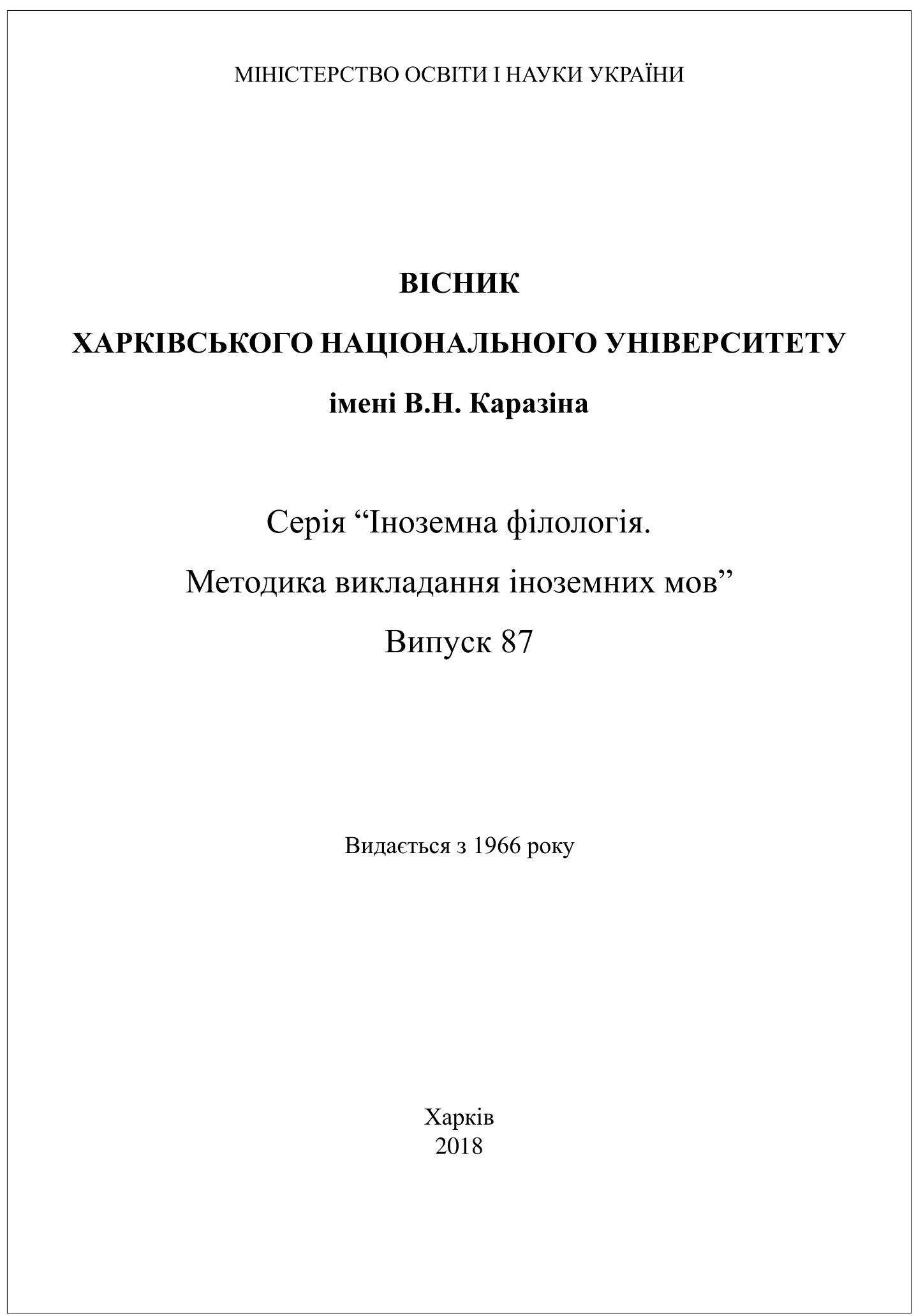Implementation of the communicative function in Dave Barry’s comic idiodiscourse
Abstract
In the article, the study of the communicative function on the material of comic idiodiscourse of the American writer-humorist Dave Barry is undertaken for the first time. It has been revealed that the role of the communicative function in comic idiodiscourse is determined by peculiarities of certain information transmission that the author has included in his comic texts, through which he influences his reader. The essence of this function lies in dialogical organization of idiodiscourse, in the author's interaction with the addressee. Thus, communicative intentions of the speakers are manifested in dialogue. It has been discovered that successful dialogical comic communication consists of three stages: establishment, maintenance and breaking contact. These three stages are marked by both verbal and non-verbal forms of manifestation. The results of the analysis show that at the stage of contact establishment D. Barry and his opponent use greetings and gestures. Presence of proxemic and kinesic components – distance between communicants, friendly gestures and facial expressions during the greeting, point at sociable and cheerful communication. To the most frequently used means of contact maintenance we refer well-known facts and clichés that help emphasize the particular fact or event, which allows the speakers to continue dialogue. Breaking contact is also enhanced by non-verbal display – a handshake and a wave of the hand at parting. It is determined that to produce a comic effect D. Barry most often violates norms – language, speech, ontological, logical-conceptual, valorative.
Downloads
References
Bahtin, M.M. (1997). Problema teksta [Text Problem]. Moskva: Russkie slovari Publ.
Bogdanov, V.V. (1990). Rechevoe obschenie: pragmaticheskie i semanticheskie aspektyi [Speech communication: pragmatic and semantic aspects]. Leningrad: Leningradskiy gos. universitet Publ.
Vasileva, N.V. (1996). Kratkiy slovar lingvisticheskih terminov [A Brief Dictionary of Linguistic Terms]. Moskva: Russ. yaz. Publ.
Ivanischeva, O.N. (2015). Tolerantnyiy diskurs v sovremennom obschestve: uchebnoe posobie [Tolerant discourse in modern society: a textbook]. M.-Berlin: Direkt-Media Publ.
Kozhina, M.N. (2008). Stilistika russkogo yazyika: uchebnik [Stylistics of the Russian language: a textbook]. Moskva: Flinta Publ.
Levitskiy, A.E. (2010). Funktsionalnyiy podhod v sovremennoy lingvistike [Functional approach in modern linguistics]. Kyiv: Kyivskyi universytet Publ.
Lobova, O.K. (2013). Angloyazyichnaya stendap-komediya kak zhanr komicheskogo institutsionalnogo. Dys. kand. filol. nauk [British and American standup-comedy as a genre of comic institutional discourse. Cand. philol. sci. diss.]. Kharkov. 226 p. (in Russian).
Martyinyuk, A.P. (2009). Razgranichenie diskursa i teksta s pozitsiy integratsionnogo podhoda [Differentiating discourse and text on the basis of the integrational approach]. Visnyk Kharkiv. nats. un-tu im.V.N. Karazina. – V.N. Karazin Kharkiv. National Univ. Messenger, 866, 69–77 (in Russian).
Samokhina, V.O. (2012). Zhart u suchasnomu komunikatyvnomu prostori Velykoi Brytanii ta SShA: monohrafiia [Joke in modern communicative space of Great Britain and the USA]. Kharkiv: KhNU im. V.N. Karazina Publ.
Formanovskaya, N.I. (2002). Rechevoe obschenie: kommunikativno-pragmaticheskiy podhod [Speech communication: communicative and pragmatic approach]. Moskva: Russ. yaz. Publ.
Shpak, O.V. (2015). Realizatsiia komunikatyvnoi katehorii KONTAKT u suchasnomu anhlomovnomu dyskursi. Dys. kand. filol. nauk [The Communicative Category CONTACT in Modern English Discourse. Cand. philol. sci. diss.]. Kharkiv. 238 p. (in Ukrainian).




